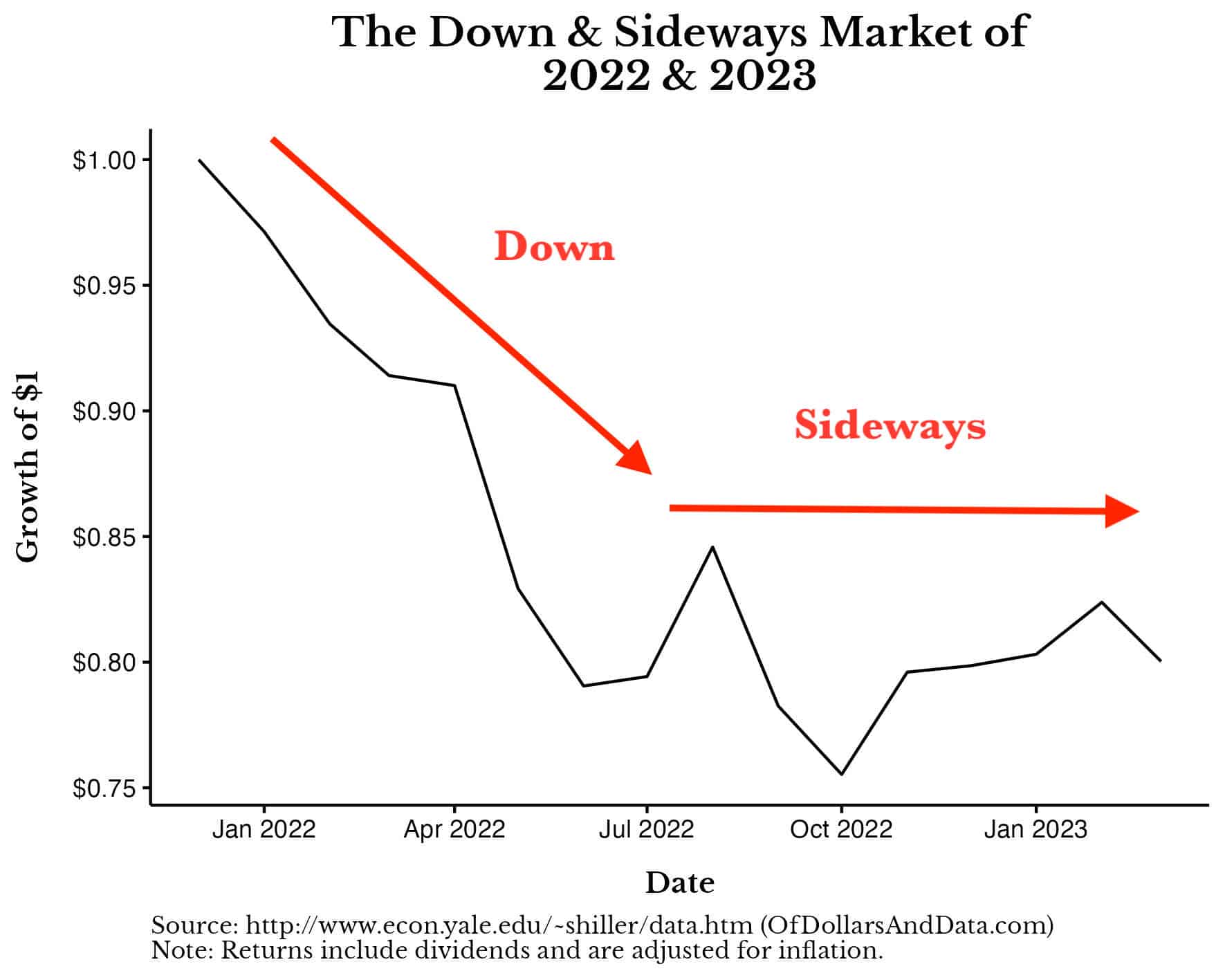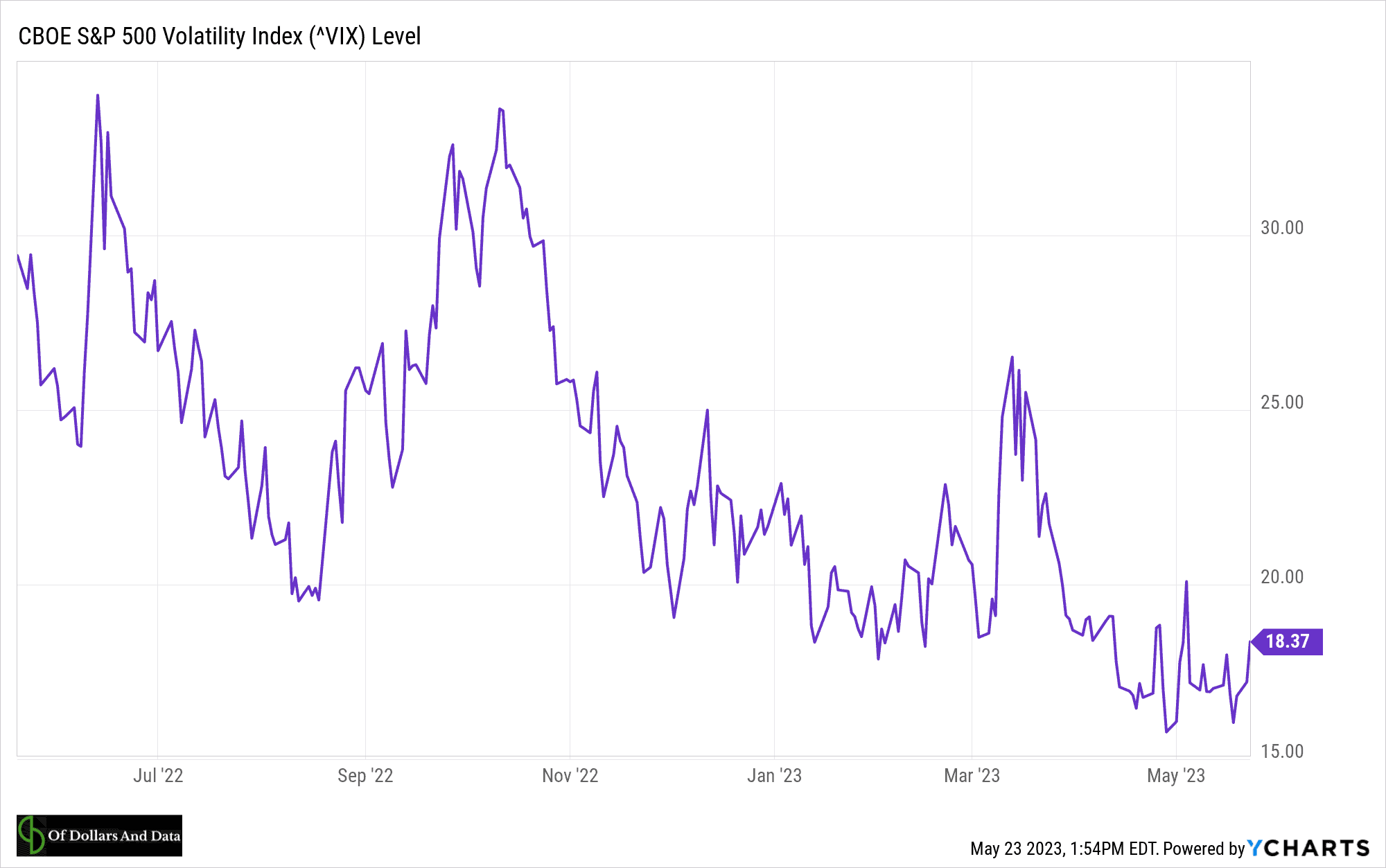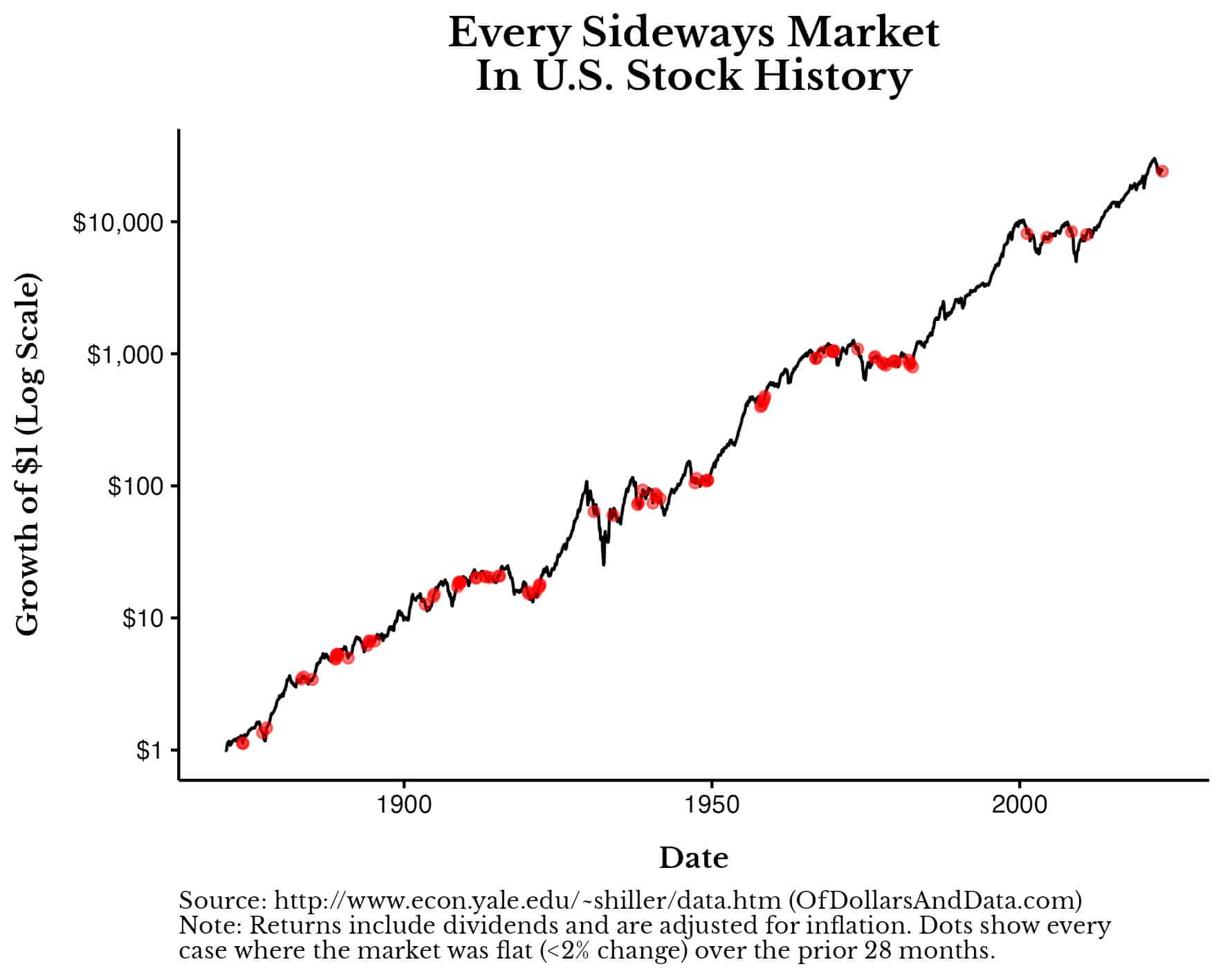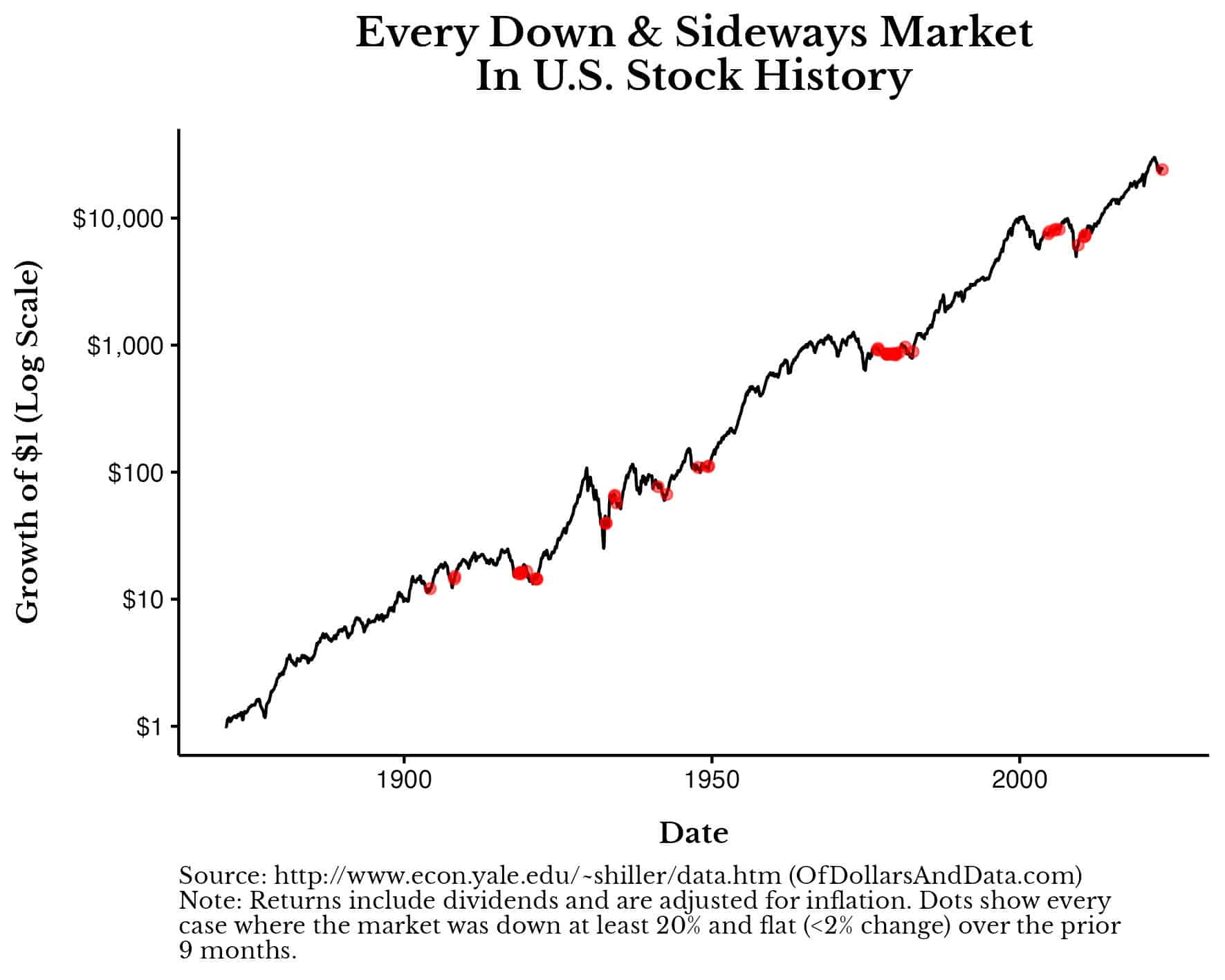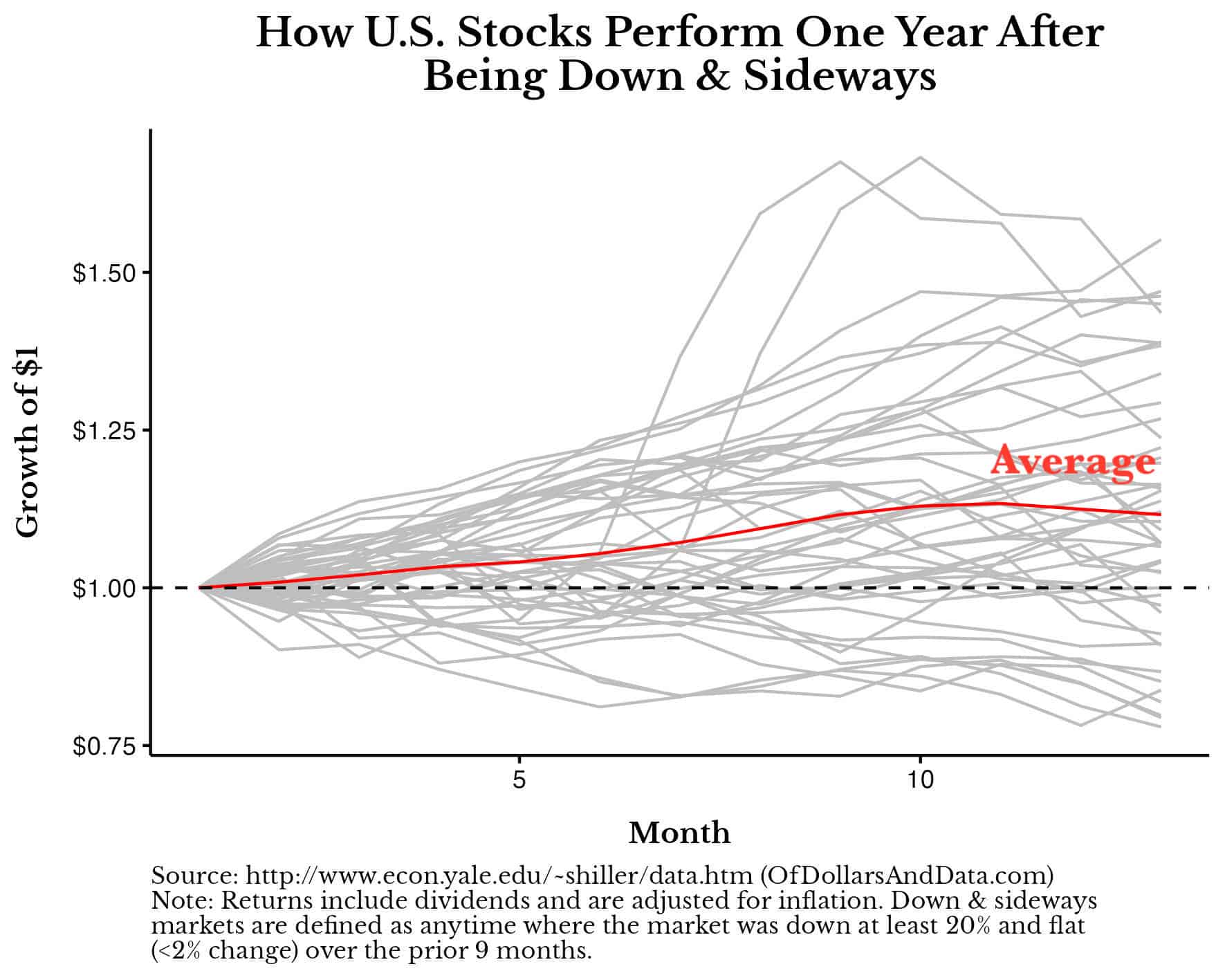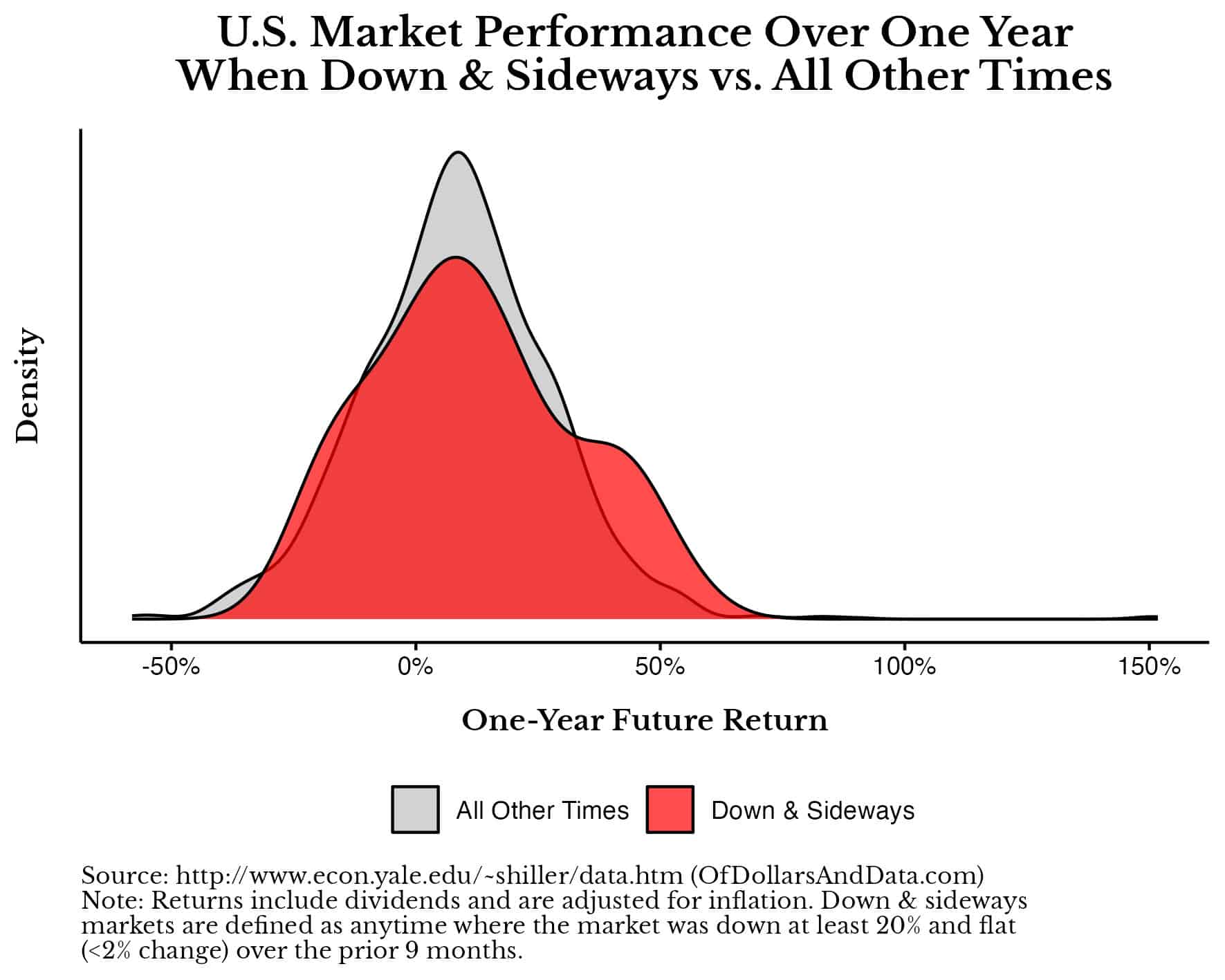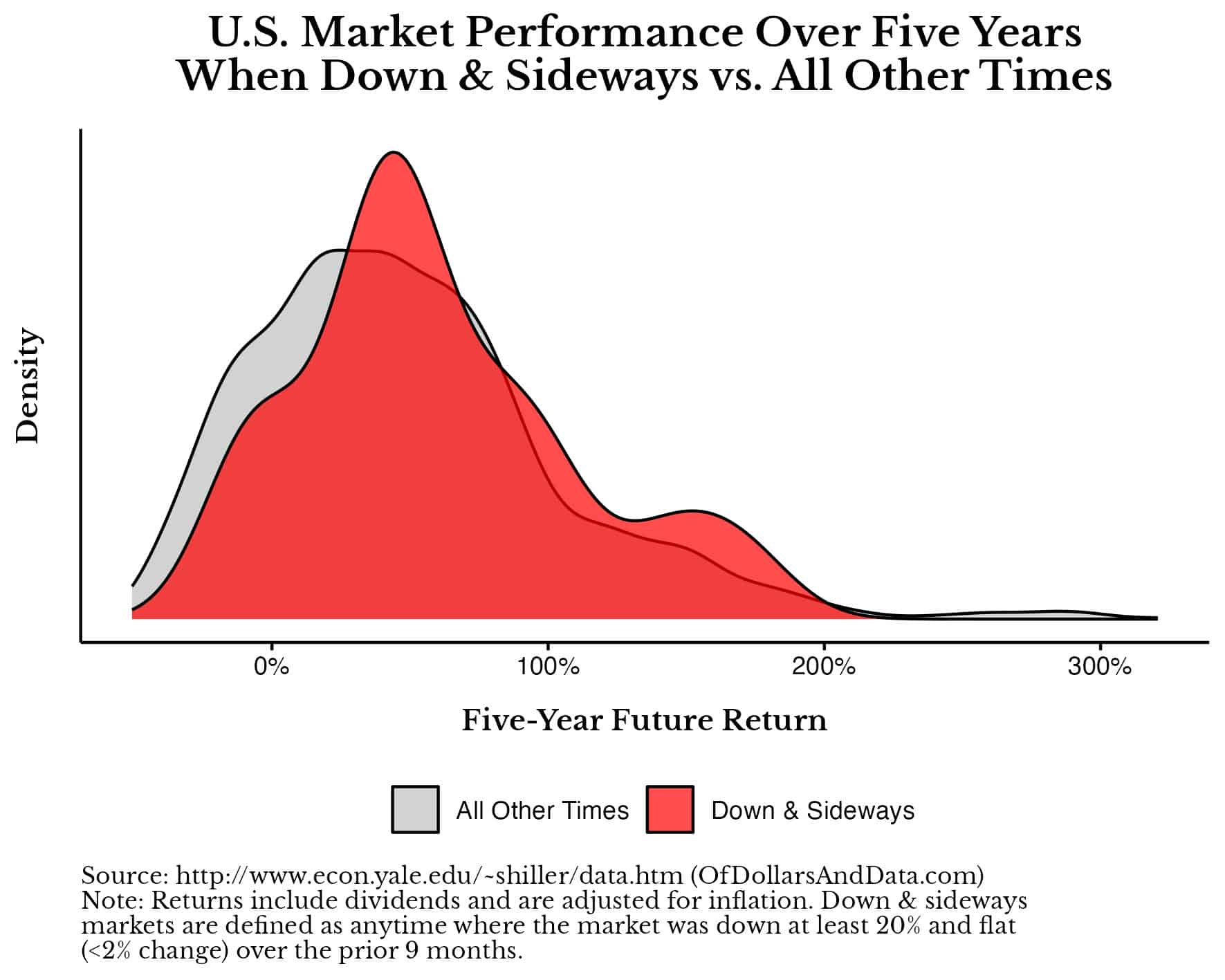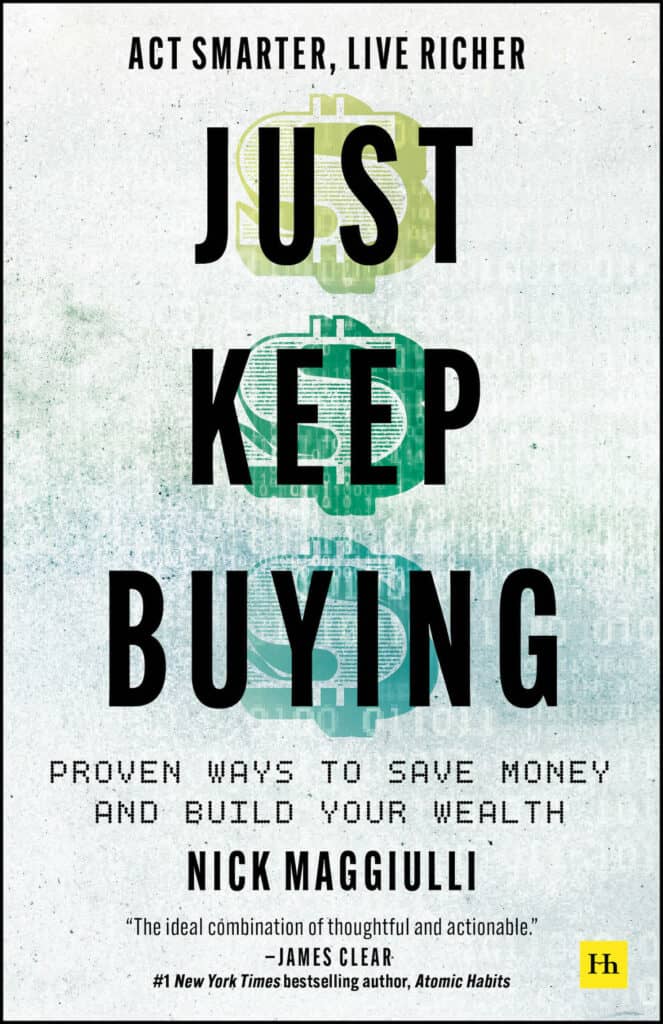Throughout financial history markets have gone through periods of growth, periods of decline, and, sometimes, perplexing periods of stagnation. This is where investors in U.S. stocks find themselves today. U.S. equities have been flat (after including dividends and adjusting for inflation) over the last 28 months, and have been flat following a 20% decline over the last nine months.
We are in what I would call a “down & sideways” market. We had a major decline in 2022 and have been going sideways ever since. You can see this more clearly in the chart below:
Such a market environment has created a general malaise among investors, even as conditions seem to be improving. As Eric Balchunas and Joel Weber recently noted, “The S&P 500 is up 9%, the NASDAQ 100 has jumped 25%…and yet no one seems to care.” We are in what Kyla dubbed The Vibecession—a period of temporary vibe decline where the economic data says things are okay, but people aren’t. In other words, U.S. investors are tired of the stock market.
You can see this more clearly if you look at the decline in market volatility over the past year:
Though the possibility of a U.S. default sits on the horizon, there seems to be a growing sense of complacency among investors.
Despite this prevailing indifference in the current market environment, the data suggests that “down & sideways” markets are actually more bullish than they first appear. But, before we get to that, let’s look at how common “sideways” and “down & sideways” markets are in the first place.
How Common are “Sideways” and “Down & Sideways” Markets?
Going back to 1871, the U.S. stock market has experienced a sideways market (i.e. a market that closed within 2% of the same value 28 months later) in about 5% of all months. You can see this in the plot below which illustrates the growth of $1 in the U.S. stock market (on a log scale) since 1871 with every sideways market highlighted in red:
Some of these sideways markets were the result of a boom and bust while others were due to general stagnation in stock prices. Either way, today’s market classifies as a sideways market.
However, it also classifies as a “down & sideways” market too. For the purposes of this article, a “down & sideways” market is a market that was down by 20% and then closed within 2% of the same value 9 months later. Relative to sideways markets, down & sideways markets are about twice as rare, showing up in only 2.5% of all months in U.S. market history:
Down & sideways markets don’t happen as often as sideways markets simply because larger declines (>20%) haven’t lasted too long in U.S. market history. In fact, there have only been two periods with sustained down & sideways markets: The Great Depression (1930s) and the high inflation period of the late 1970s.
So, while we are in a down & sideways market today, it seems more likely than not that it will be short lived. Why? Because down & sideways markets tend to have slightly higher future growth than all other periods in market history.
How Bullish are Down & Sideways Markets?
When it comes to quantifying how bullish down & sideways markets are, I will examine the future returns of these markets and also compare them to all other periods in U.S. stock market history. For example, below is a plot of the future 1-year growth of all down & sideways markets in U.S. history (with the average growth highlighted in red):
For the 45 months in U.S. history where stocks were down & sideways, they had a median return of 9.1% (including dividends and adjusting for inflation) over the next year. Over all other periods, the U.S. stock market had a median return of 8.7% (including dividends and adjusting for inflation).
You can see this more clearly if we plot the distribution of 1-year returns for all down & sideways markets vs. all other time periods:
While the general shape of the distribution of future returns is similar between down & sideways markets and all other times, the distribution for down & sideways markets seems to be shifted slightly to the right, suggesting that these markets experience stronger future returns.
And when we look at returns over the next five years, this effect seems to be even stronger for down & sideways markets:
In particular, the median annualized total real return for down & sideways market is 7.9% over the next five years compared to 7.2% during all other time periods. Unfortunately, this difference isn’t statistically significant (even at the 10% level). However, if given a choice between the two – the red return distribution associated with ‘down & sideways’ markets and the gray return distribution for all other periods, I would pick the red one every time.
Now that we have an idea of how down & sideways markets tend to perform in the future (relative to all other time periods), let’s wrap things up by discussing what this means for you in the near term.
The Bottom Line
Though U.S. investors are in a state of disinterest and complacency, the data suggests that we should be somewhat hopeful for the future. I don’t just say this because I am the permabull who wrote the book Just Keep Buying, but because the record of history indicates that this is true. And I try to listen to history as much as I can.
For example, when the yield curve inverted over a year ago, I was one of the first to come out and say that future returns looked grim. And, guess what? This was the right call. From April 2022 to April 2023, U.S. stocks lost a little over 10% in value after adjusting for inflation.
Well, today I am making the opposite call. I am saying that future returns seem slightly more bullish than normal. This is true despite the U.S. debt ceiling looming over us. In fact, it’s true because of the down & sideways market we find ourselves in today. These markets tend to be bullish over the short-to-medium term. Why? I am not 100% sure, but probably because strong recoveries tend to occur after large market declines.
Of course, there is a chance that I’m wrong and this ends up being like the 1930s or the 1970s all over again. There is a chance that this will be the third sustained “down & sideways” market in U.S. history. But, I’m betting that it isn’t. I’m betting that Kyla Scanlon, Eric Balchunas, and many others like them are right. I’m betting that it isn’t a true economic catastrophe. It’s just a bad vibe.
Until next time, thank you for reading!
If you liked this post, consider signing up for my newsletter.
This is post 350. Any code I have related to this post can be found here with the same numbering: https://github.com/nmaggiulli/of-dollars-and-data
